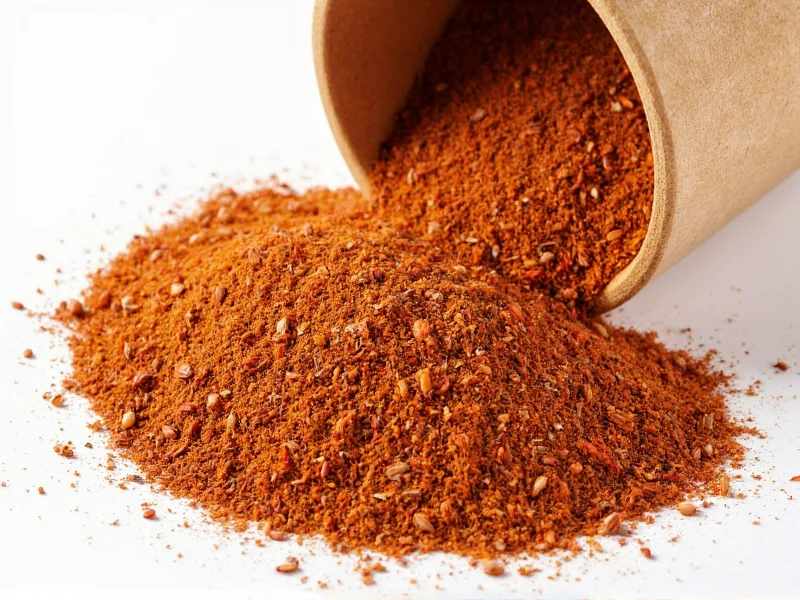Dried seasoning mixes provide home cooks and professional chefs with convenient flavor solutions that maintain stability and potency over extended periods. Unlike fresh herbs that wilt and lose potency within days, properly formulated dried blends retain their aromatic compounds and flavor profiles for months when stored correctly.
Composition and Science Behind Dried Seasoning Blends
The effectiveness of a dried seasoning mix stems from the careful selection and proportioning of dehydrated ingredients. Most quality blends combine three essential components: base spices (like paprika or garlic powder), aromatic herbs (such as dried thyme or oregano), and flavor enhancers (including salt, sugar, or citric acid). The drying process concentrates volatile oils while removing moisture that would otherwise promote bacterial growth and spoilage.
Food science research shows that the particle size of dried ingredients significantly impacts flavor release. Finely ground components distribute more evenly in dishes, while coarsely ground elements provide bursts of flavor. Professional dried seasoning mix recipes often specify grind sizes to achieve particular culinary effects, whether creating a subtle background note or a pronounced flavor accent.
Common Types of Dried Seasoning Mixes
| Seasoning Type | Primary Ingredients | Best Culinary Applications | Shelf Life |
|---|---|---|---|
| Italian Herb Blend | Basil, oregano, rosemary, thyme | Pasta sauces, pizza, roasted vegetables | 18-24 months |
| Taco Seasoning | Chili powder, cumin, garlic, onion | Tacos, burritos, chili, fajitas | 12-18 months |
| Herbes de Provence | Lavender, thyme, savory, marjoram | Roasted meats, stews, breads | 24+ months |
| Cajun/Creole Blend | Paprika, cayenne, garlic, black pepper | Gumbos, jambalaya, grilled proteins | 12 months |
| Lemon Herb Mix | Dried lemon zest, parsley, dill, chives | Fish, chicken, salad dressings | 9-12 months |
Practical Usage Guidelines for Maximum Flavor Impact
Understanding when and how to incorporate dried seasoning mixes makes the difference between adequate and exceptional results. For most savory applications, add dried blends during the cooking process to allow flavors to meld with other ingredients. The general rule is to introduce dried seasonings about 15-20 minutes before the end of cooking time, giving them sufficient opportunity to rehydrate and distribute throughout the dish.
When working with oil-based cooking methods, blooming dried seasonings in hot oil for 30-60 seconds before adding other ingredients significantly enhances flavor extraction. This technique, commonly used in professional kitchens, activates the essential oils in dried herbs and spices, creating a more robust flavor foundation for sauces, stews, and braises.
Storage Techniques for Extended Freshness
Proper storage determines how long your dried seasoning mix maintains peak flavor. Exposure to light, heat, and moisture are the primary enemies of dried spice longevity. Store blends in airtight containers away from heat sources like stovetops or ovens. Dark glass or opaque containers preserve flavor compounds better than clear containers by blocking light exposure.
For extended shelf life, consider dividing larger batches into smaller portions, storing the majority in the freezer while keeping a small working supply in your spice cabinet. Freezing dried seasoning mixes at 0°F (-18°C) can preserve flavor integrity for up to three years. When retrieving frozen blends, allow them to reach room temperature in their sealed container before opening to prevent condensation.
Creating Custom Dried Seasoning Mixes at Home
Homemade dried seasoning mix recipes offer superior flavor control compared to commercial products. Start with high-quality individual dried spices rather than pre-mixed blends to ensure freshness and purity. A basic ratio for most savory blends follows the 4-2-1 principle: 4 parts primary spice, 2 parts secondary flavor, and 1 part accent ingredient.
For example, a versatile all-purpose seasoning might combine 4 tablespoons paprika, 2 tablespoons garlic powder, and 1 tablespoon each of onion powder, black pepper, and dried thyme. Always grind whole spices yourself when possible, as pre-ground versions lose potency more quickly. Allow homemade blends to rest for 24-48 hours after mixing to let the flavors harmonize before use.
Avoiding Common Dried Seasoning Mistakes
Many home cooks make critical errors when using dried seasoning mixes that compromise results. Overlooking the salt content in commercial blends often leads to oversalted dishes—always check labels before adding additional salt. Another frequent mistake involves using dried herbs in applications better suited for fresh varieties, such as delicate salad dressings or garnishes where fresh herbs provide superior texture and brighter flavor notes.
Remember that dried seasonings require rehydration to reach their full flavor potential. Adding them directly to cold ingredients or at the very end of cooking prevents proper flavor development. For best results, incorporate dried blends into dishes with some liquid content or during the early-to-mid cooking stages when moisture and heat can activate their flavor compounds.











 浙公网安备
33010002000092号
浙公网安备
33010002000092号 浙B2-20120091-4
浙B2-20120091-4